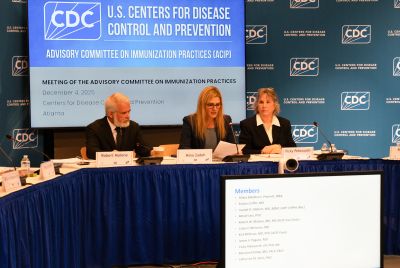Study Reveals Most Expensive US State For Healthcare Where Average Insurance Is $948—It's Not New York Or California!
Many Americans struggle to afford healthcare due to high costs and limited access

A new study by Overnight Glasses ranks Alaska as the most expensive state for healthcare in the United States. The study found average health insurance costs in Alaska to be $948 per month, where MRI expenses reach a staggering $656.
The analysis examined key healthcare costs across all 50 states to identify the regions where residents face the highest financial burden.
Healthcare Costs Across The United States
The study evaluated healthcare costs based on several factors, including:
- Health insurance premiums
- MRI expenses
- CT scan expenses
- Emergency room expenses
- Vision exam expenses
- Dental exam expenses
These metrics were combined to create a composite score on a 100-point scale. A higher score indicates higher healthcare costs in a state. Alaska's healthcare system remains one of the most expensive in the United States despite its relatively small population of 733,536.
The state earned a top composite score of 82.97 in the study, solidifying its position as the costliest state for healthcare services. In addition to high costs for health insurance and MRIs, Alaska also reports steep expenses for CT scans ($499.25) and emergency room visits ($2,265 on average).
New York And New Jersey: High-Cost Healthcare States
New York closely follows Alaska in second place with a composite score of 74.43. The state has the second-highest healthcare spending per capita at $14,007 and ranks third in MRI costs at $599. Additionally, high costs for vision exams ($112) and dental exams ($209) contribute to its overall ranking as a high-cost state for healthcare.
New Jersey ranks third with a composite score of 64.57. The state is known for having the highest emergency room costs in the United States, with an average cost of $3,377 per visit. Coupled with expensive diagnostic procedures like MRIs and CT scans, New Jersey residents face some of the most substantial financial challenges in healthcare.
Additional States with High Healthcare Costs
Completing the top five most expensive states are:
- Vermont (composite score: 58.77)
- California (composite score: 56.99)
- Massachusetts (composite score: 55.55)
Vermont faces high health insurance premiums ($908) and spending per capita ($12,756). Despite its large population, California struggles with significant emergency room costs ($3,238). Massachusetts also has high healthcare spending per capita ($13,319) and an average health insurance cost of $639.
Washington: Highest Healthcare Spending Per Capita
Washington ranks 9th overall, but it stands out with the highest healthcare spending per capita, at $14,381. Although its costs for health insurance and vision exams may be lower than those of some other states, Washington's overall expenditures place it firmly among the most expensive regions for healthcare.
Delaware rounds out the list in 10th place, with healthcare spending per capita of $12,899 and emergency room costs of $1,746.
The Importance of Proactive Healthcare Strategies
A spokesperson from Overnight Glasses commented on the study findings, emphasising the importance of proactive healthcare strategies. "For individuals navigating these costs, being proactive—like exploring insurance options, utilising preventive care, and comparing healthcare providers—can make a big difference."
"As states continue to grapple with these expenses, there's a clear need for innovative solutions that prioritise both access and cost-effectiveness to ease the financial burden on residents," the spokesperson added.
This comprehensive study highlights residents' significant financial challenges in states with high healthcare costs. The data reveals that healthcare expenses continue to rise, placing a substantial burden on individuals and families. For a detailed analysis, including weightings and data sources, please refer to the complete report available from Overnight Glasses.
The Paradox Of US Healthcare Spending
Despite the US leading in healthcare spending, many Americans still struggle to afford necessary medical care, highlighting a critical gap in the system. It is worth noting that Americans spend more money on healthcare on a per capita basis compared to people in any other developed nation.
However, a new study by Gallup and West Health reveals that nearly half of Americans have not been able to pay for medical treatment or prescription drugs in recent times. Approximately 45 percent of Americans surveyed by Gallup and West Health reported recently skipping medical treatment or medications due to cost or lack of accessibility.
Among this group, roughly eight percent indicated that they would be unable to afford necessary care if they needed it today. Gallup and West Health refer to this population segment as "cost desperate."
According to the study, although 55 percent of Americans are considered "cost secure," meaning they can afford necessary medical care and medications, this percentage has decreased from 61 percent in 2022.
This decline is consistent with comments made by then-US president Donald Trump in 2017, who suggested that healthcare in other countries is superior to the US system.
The Burden of Rising Insurance Deductibles
According to the Kaiser Family Foundation (KFF), the average family insurance deductible in the United States has increased significantly, rising from $2,500 in 2013 to approximately $3,800 in 2022. The Internal Revenue Service (IRS) classifies insurance plans with deductibles of $3,200 or more as high-deductible plans.
Even Americans with health insurance are facing challenges in affording and accessing care. Many individuals complain that their insurers are creating barriers to treatment through practices such as prior authorisation denials and claim denials.
As an example, on Monday, demonstrators gathered outside UnitedHealthcare headquarters to protest the company's alleged refusal to approve care through these methods.
"Health insurance coverage has expanded in America, but we are finding it is private health insurance corporations themselves that are often the largest barrier for people to receive the care they and their doctor agree they need," Aija Nemer-Aanerud, campaign director with the People's Action Institute, told CBS Minnesota.
A spokesperson for UnitedHealthcare informed CBS Minnesota that the company has resolved the issues raised by the recent protests.
© Copyright IBTimes 2025. All rights reserved.






















